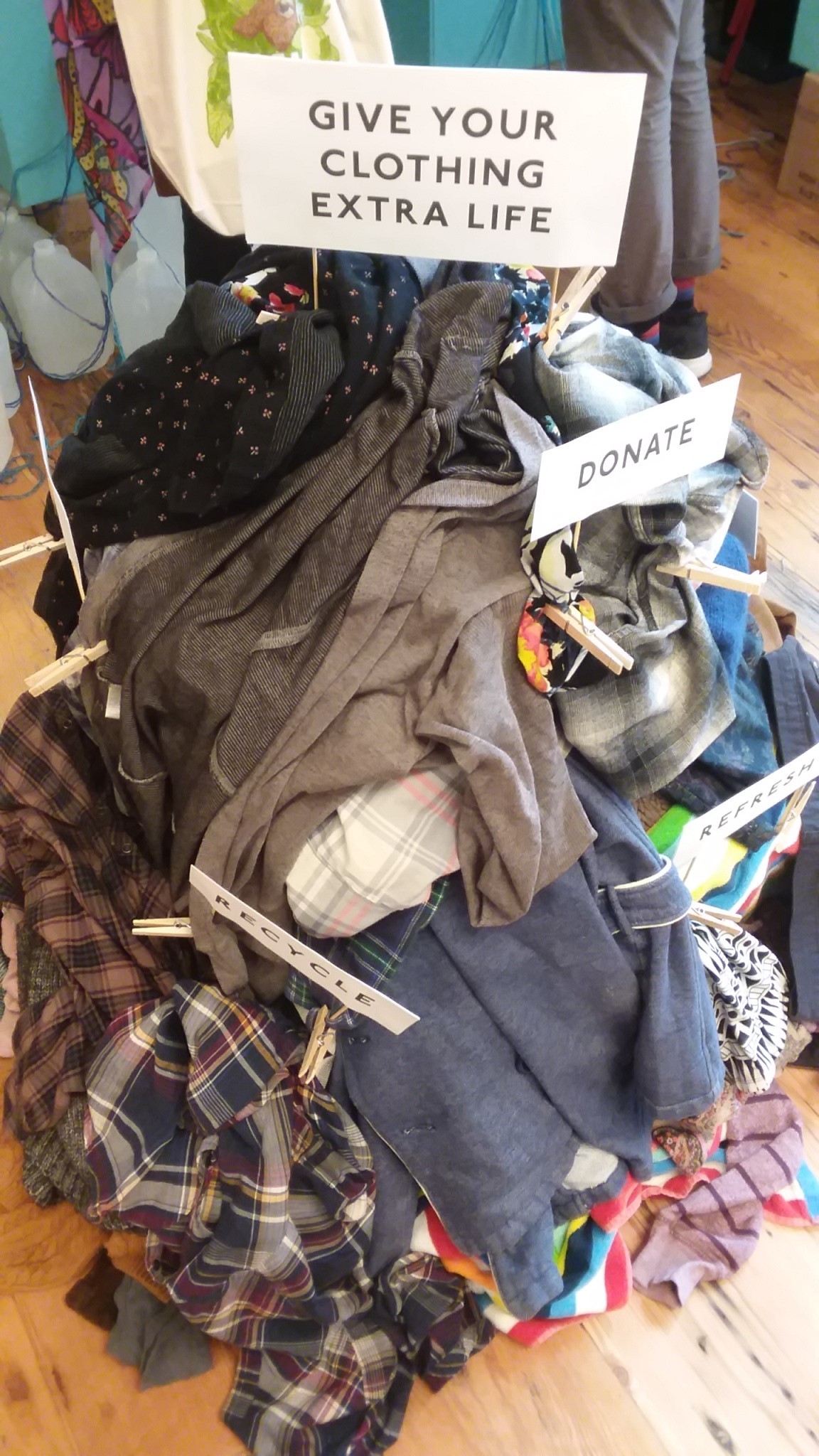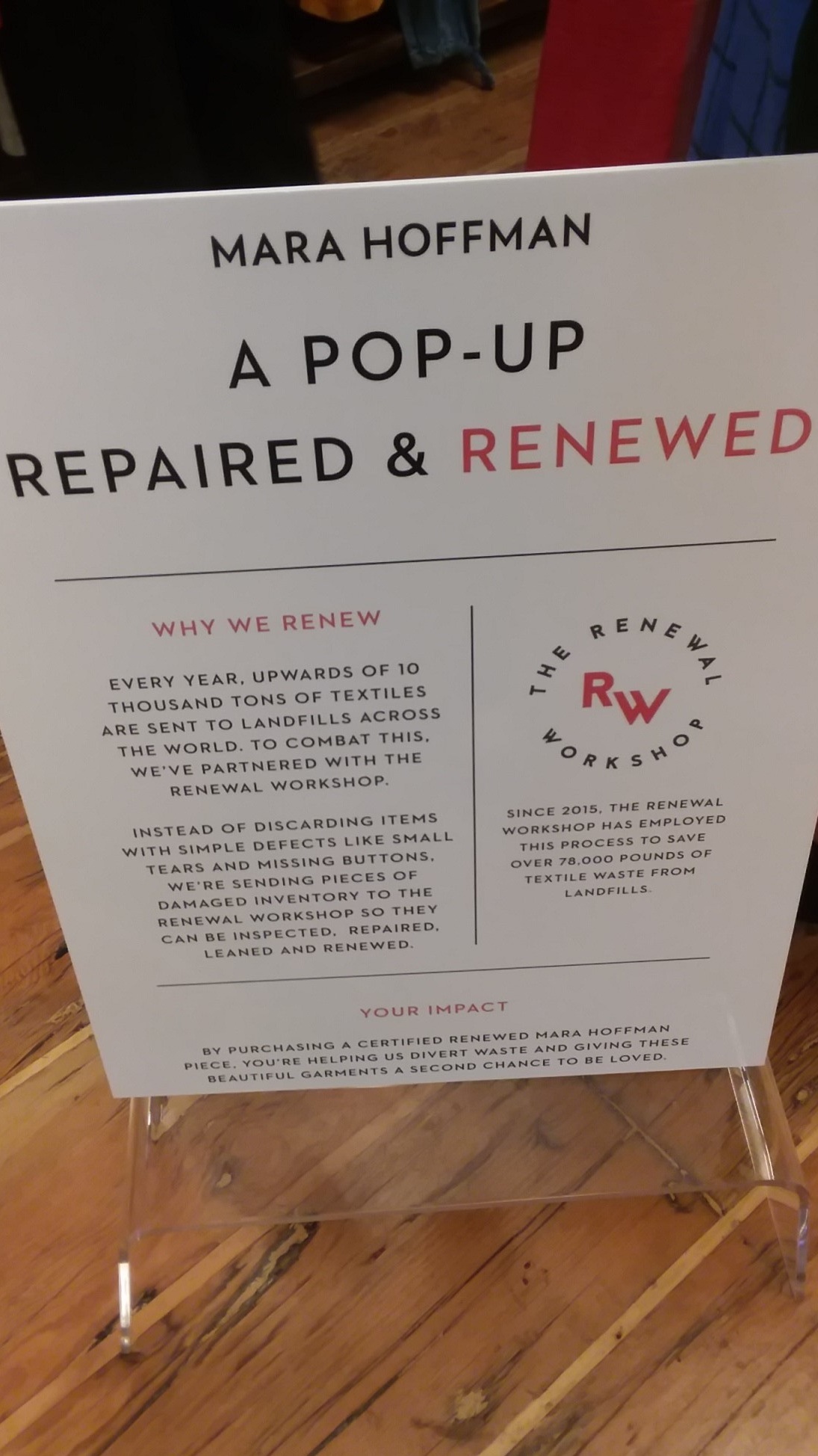Alicia Polacok from the Bureau of Planning and Sustainability shares what she learned about sustainable fashion and how to waste less clothing.
The Sustainable Fashion Forum was held in Portland in April, providing an opportunity for those in the fashion industry – and those who may be curious (like me!) to learn more – to have an open dialogue about the social and environmental effects fashion has on our world and what we can do to improve it.
A panel of experts spoke on a variety of topics from cities around the country. There were plenty of Portland connections too, including panelists, stylists and more.
From learning about fair trade certified clothing and what personal stylists can do for you, to thinking about repurposing and repairing, the day was packed with new ideas, tips and tricks, and professionals who can help if you need more inspiration!
Repair, Repurpose, Reinvent
The world of fashion has an overproduction issue. We have plenty of clothes to choose from, so why not wear what you already own, or shop at thrift stores to add to your wardrobe in new ways. Extending the life of our clothing is key and we can do this by wearing what’s in our closet. Organize by color, category and try new things together. One stylist said if you get compliments, then it is working! Confidence is key.
Here’s an idea from a stylist that I am going to try too: Take out 10-15 of your favorite pieces from your closet and put them away for a week. This will force you to wear other stuff you have instead and experiment with different styles.
Another stylist who specializes in buying used clothes at local thrift stores gave this advice: Shop early and often and return to the same places. Once you find some signature pieces, have them altered to fit your body type. Know your body type and measurements, especially when shopping online. Try an item in a new way before getting rid of it, especially if it’s a signature piece. Wear it inside out, backwards, upside down, or experiment and mix-and-match with pieces you already own. Fashion is about breaking the rules with shapes, colors and textures.
A collective path to sustainability
The forum also shared what happens to clothes that make their way to donation centers that can’t use them. Not surprisingly, a large percentage are sent abroad. It is tough to combat these practices, however there are alternatives.
The Fair Trade Certified campaign, We Wear Fair, informs shoppers who is behind the clothes we buy, supporting livelihoods for factory workers and creating transparency in the fashion industry. Consumers drive change when they shop their values, so get informed on brands that are certified by learning more with the guide to fair trade clothing.
FABSCRAP is trying to do something about reusable fabric. Sorting is a difficult but important part of the process by separating out the types of materials that are recyclable. Fabrics that can be recycled are cotton, polyester and wool. Mixed materials may end up as “shoddy”, which is a shred material and not recyclable.
FABSCRAP started in response to waste in the fashion industry in New York City, and shows those in the industry that there is financial and environmental value in materials, by offering reuse and recycling options instead.
The Renewal Workshop in Cascade Locks, Oregon, is about waste minimization. They take discarded apparel and textiles and turn them into Renewed Apparel, upcycled materials or recycling feed stock. They provide the apparel industry a circular and sustainable solution and offer customers a way to become zero waste consumers.
There was so much good stuff shared at the event. You can learn more from these related resources:
ALTRD is an online option for alterations, or find local options through Portland Repair Finder.
The thredUP annual resale report and a recent article in Teen Vogue explains that used clothing will outsell fast fashion in the future.
The Guardian highlighted people who have stopped buying new clothes altogether.





